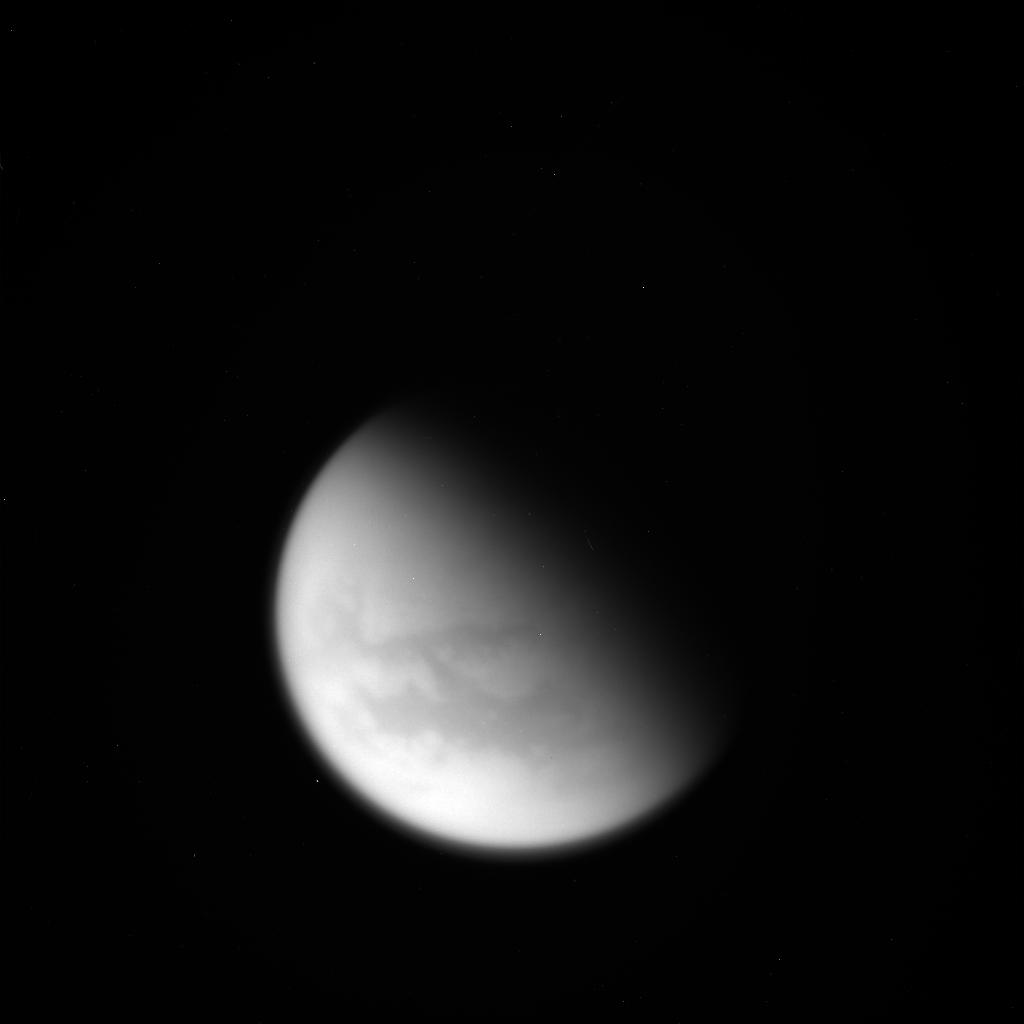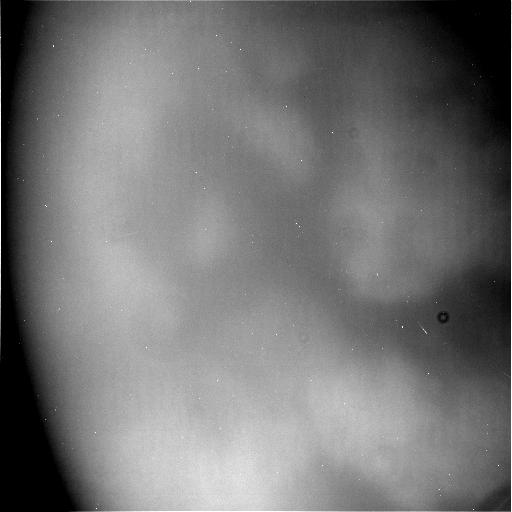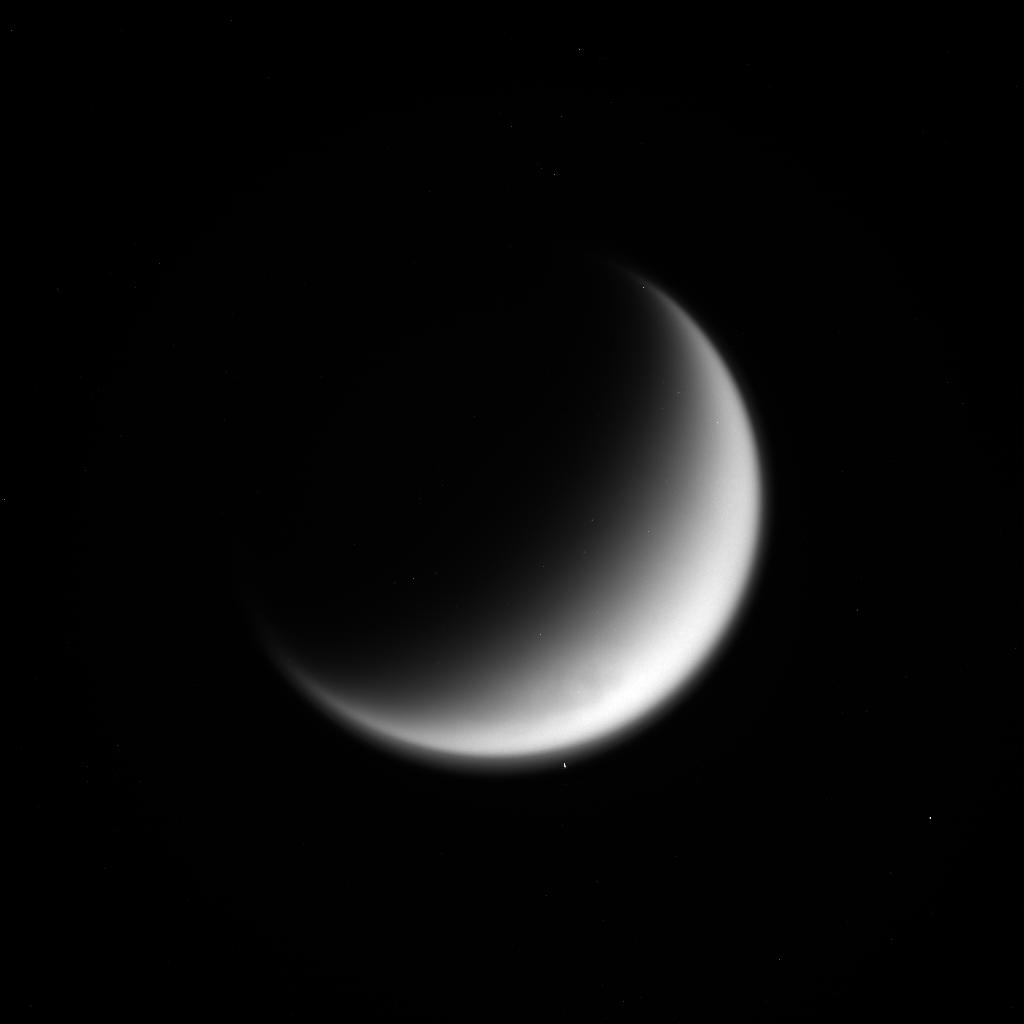No Turning Back: Titan Flyby Assures Cassini's Crash Into Saturn

There's no turning back now for the Cassini probe at Saturn.
In the early morning hours of April 22, the Cassini spacecraft at Saturn made one last close flyby of Titan, capturing a few final images of this hazy moon. The flyby altered the spacecraft's orbit in such a way that Cassini will be unable to avoid crashing into Saturn this September.
Cassini has been studying Saturn and its moons since 2004, and is running low on fuel. For its final act, Cassini is scheduled to make 22 dives between Saturn and its rings, starting April 26. The spacecraft will then dive into Saturn on Sept. 15, transmitting for as long as possible to provide information about the gas giant's atmosphere.
"With this flyby [of Titan], we're committed to the Grand Finale," said Earl Maize, Cassini project manager at JPL, in the same statement. "The spacecraft is now on a ballistic path, so that even if we were to forgo future small course adjustments using thrusters, we would still enter Saturn's atmosphere on Sept. 15 no matter what." [Cassini's 'Grand Finale' Saturn Orbits - Astrodynamics Explained | Video]

The first ring dive will happen April 26 at 5 a.m. EDT (2 a.m. PDT/ 0900 GMT), but scientists won't hear from the spacecraft for almost an entire day while it's making the science observations. The images and data are expected to come back to NASA and its partners starting around 3:05 a.m. EDT (12:05 a.m. PDT/ 0705 GMT) April 27.
The Grand Finale will eliminate the small possibility of Cassini crashing into a region that scientists think could potentially be habitable, such as the moon of Enceladus, and introducing microbes from Earth. If the spacecraft is carrying microbes (which are nearly impossible to eradicate before a spacecraft's flight), those microbes could invade a habitable environment and kill off any native life-forms, similar to what invasive species have done on Earth.
To avoid that possibility, the spacecraft will be deliberately steered into Saturn (which is not considered habitable), where it will be destroyed by the planet's atmosphere.
Get the Space.com Newsletter
Breaking space news, the latest updates on rocket launches, skywatching events and more!
One last look at Titan
Cassini zoomed by Titan at a minimum altitude of 608 miles (979 kilometers) above the surface, probing the area below with radar. Data was returned after the flyby concerning several of the moon's seas and lakes, which consist of liquid methane and other hydrocarbons like ethane. Some of the areas had been imaged by Cassini before, but not using radar, according to a statement from NASA.

"Cassini's up-close exploration of Titan is now behind us, but the rich volume of data the spacecraft has collected will fuel scientific study for decades to come," said Linda Spilker, the mission's project scientist at NASA's Jet Propulsion Laboratory in California, in a statement.
The craft also captured new radar images of one of Titan's "magic islands," features that have appeared and disappeared in satellite images of Titan's lakes and oceans. Cassini previously observed this "island" in one of Titan's liquid methane seas called Ligeia Mare, where it seemed to change in brightness periodically. Researchers have suggested that the brightness changes are due to waves, solids or bubbles reflecting sunlight, with waves believed to be the most likely explanation.
Follow Elizabeth Howell @howellspace, or Space.com @Spacedotcom. We're also on Facebook and Google+. Original article on Space.com.
Join our Space Forums to keep talking space on the latest missions, night sky and more! And if you have a news tip, correction or comment, let us know at: community@space.com.

Elizabeth Howell (she/her), Ph.D., was a staff writer in the spaceflight channel between 2022 and 2024 specializing in Canadian space news. She was contributing writer for Space.com for 10 years from 2012 to 2024. Elizabeth's reporting includes multiple exclusives with the White House, leading world coverage about a lost-and-found space tomato on the International Space Station, witnessing five human spaceflight launches on two continents, flying parabolic, working inside a spacesuit, and participating in a simulated Mars mission. Her latest book, "Why Am I Taller?" (ECW Press, 2022) is co-written with astronaut Dave Williams.









